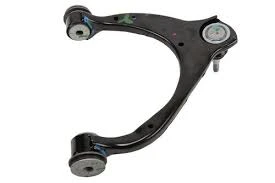
-
 Afrikaans
Afrikaans -
 Albanian
Albanian -
 Amharic
Amharic -
 Arabic
Arabic -
 Armenian
Armenian -
 Azerbaijani
Azerbaijani -
 Basque
Basque -
 Belarusian
Belarusian -
 Bengali
Bengali -
 Bosnian
Bosnian -
 Bulgarian
Bulgarian -
 Catalan
Catalan -
 Cebuano
Cebuano -
 Corsican
Corsican -
 Croatian
Croatian -
 Czech
Czech -
 Danish
Danish -
 Dutch
Dutch -
 English
English -
 Esperanto
Esperanto -
 Estonian
Estonian -
 Finnish
Finnish -
 French
French -
 Frisian
Frisian -
 Galician
Galician -
 Georgian
Georgian -
 German
German -
 Greek
Greek -
 Gujarati
Gujarati -
 Haitian Creole
Haitian Creole -
 hausa
hausa -
 hawaiian
hawaiian -
 Hebrew
Hebrew -
 Hindi
Hindi -
 Miao
Miao -
 Hungarian
Hungarian -
 Icelandic
Icelandic -
 igbo
igbo -
 Indonesian
Indonesian -
 irish
irish -
 Italian
Italian -
 Japanese
Japanese -
 Javanese
Javanese -
 Kannada
Kannada -
 kazakh
kazakh -
 Khmer
Khmer -
 Rwandese
Rwandese -
 Korean
Korean -
 Kurdish
Kurdish -
 Kyrgyz
Kyrgyz -
 Lao
Lao -
 Latin
Latin -
 Latvian
Latvian -
 Lithuanian
Lithuanian -
 Luxembourgish
Luxembourgish -
 Macedonian
Macedonian -
 Malgashi
Malgashi -
 Malay
Malay -
 Malayalam
Malayalam -
 Maltese
Maltese -
 Maori
Maori -
 Marathi
Marathi -
 Mongolian
Mongolian -
 Myanmar
Myanmar -
 Nepali
Nepali -
 Norwegian
Norwegian -
 Norwegian
Norwegian -
 Occitan
Occitan -
 Pashto
Pashto -
 Persian
Persian -
 Polish
Polish -
 Portuguese
Portuguese -
 Punjabi
Punjabi -
 Romanian
Romanian -
 Russian
Russian -
 Samoan
Samoan -
 Scottish Gaelic
Scottish Gaelic -
 Serbian
Serbian -
 Sesotho
Sesotho -
 Shona
Shona -
 Sindhi
Sindhi -
 Sinhala
Sinhala -
 Slovak
Slovak -
 Slovenian
Slovenian -
 Somali
Somali -
 Spanish
Spanish -
 Sundanese
Sundanese -
 Swahili
Swahili -
 Swedish
Swedish -
 Tagalog
Tagalog -
 Tajik
Tajik -
 Tamil
Tamil -
 Tatar
Tatar -
 Telugu
Telugu -
 Thai
Thai -
 Turkish
Turkish -
 Turkmen
Turkmen -
 Ukrainian
Ukrainian -
 Urdu
Urdu -
 Uighur
Uighur -
 Uzbek
Uzbek -
 Vietnamese
Vietnamese -
 Welsh
Welsh -
 Bantu
Bantu -
 Yiddish
Yiddish -
 Yoruba
Yoruba -
 Zulu
Zulu
Optimizing Vehicle Dynamics with Effective Control Arm Design and Implementation
The Importance of Control Arms in Automobiles
In the world of automotive engineering, one often overlooks the significance of various components that contribute to a vehicle's performance and safety. Among these essential parts, the control arm stands out as a crucial element in the suspension system. Understanding the role and functionality of control arms can shed light on how they impact the overall performance and ride quality of a vehicle.
Control arms, also known as A-arms or wishbones, are pivotal components that connect the vehicle's chassis to the wheels. Typically, a vehicle has two control arms for each wheel—an upper control arm and a lower control arm. These arms allow for controlled movement and alignment of the wheels relative to the car’s body, enabling optimal handling and stability during driving.
The Importance of Control Arms in Automobiles
Moreover, control arms play a vital role in maintaining proper wheel alignment. They help to ensure that the wheels remain perpendicular to the ground and parallel to each other, which is essential for optimal tire wear and overall vehicle handling. Misalignment can lead to uneven tire wear, reduced fuel efficiency, and compromised safety due to impaired handling characteristics. Regular inspections and maintenance of control arms can prevent these issues, ensuring a smoother and safer driving experience.
control arm for car

Another important aspect of control arms is their contribution to the vehicle's suspension geometry. The design and configuration of control arms can influence the camber, caster, and toe angles of the wheels. These angles significantly affect how the vehicle responds to steering inputs, the overall stability of the car, and how effectively it adheres to the road during cornering. High-performance vehicles often utilize advanced control arm designs to maximize grip and handling, enabling drivers to achieve the desired performance on both the road and the track.
Control arms are typically made from a variety of materials, including steel, aluminum, and composites. The choice of material can impact the weight, strength, and durability of the control arm. For example, while steel control arms are known for their robustness and resistance to bending or breaking, aluminum control arms are lighter and can contribute to improved vehicle dynamics due to reduced unsprung weight. In high-performance applications, manufacturers might opt for composite materials that offer an ideal balance of strength and weight.
In recent years, advancements in technology have led to the development of adjustable control arms, which allow users to fine-tune the suspension settings according to their preferences or specific driving conditions. This adaptability is particularly beneficial for motorsport enthusiasts and custom car builders who demand precise handling characteristics.
In conclusion, control arms are integral to the functioning of a vehicle’s suspension system. Their ability to support vertical wheel movement, maintain proper alignment, and influence suspension geometry plays a vital role in ride comfort, handling dynamics, and safety. As vehicle technology continues to evolve, the development of control arms will remain a key area of focus for automakers and engineers seeking to enhance vehicle performance and driver experience. Understanding these components helps us appreciate the complexities of automotive design and the engineering marvels that keep us safe on the road.







